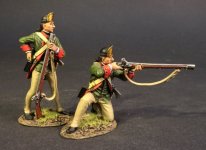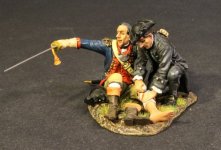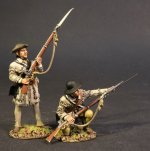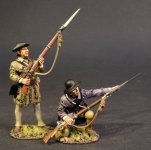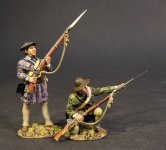NEW RELEASES FOR NOVEMBER 2019
THE EIGHTEENTH CENTURY COLLECTION
DRUMS ALONG THE MOHAWK
THE BATTLE OF SARATOGA 1777,
THE FIRST BATTLE OF SARATOGA 1777
THE BATTLE OF FREEMANS FARM, SEPTEMBER 19th 1777
THE CONTINENTAL ARMY
The Continental Army was formed by the Second Continental Congress after the outbreak of the American Revolutionary War by the colonies that became the United States of America. Established by a resolution of the Congress on June 14, 1775, it was created to coordinate the military efforts of the Thirteen Colonies in their revolt against the rule of Great Britain. The Continental Army was supplemented by local militias and troops that remained under control of the individual states or were otherwise independent. General George Washington was the commander-in-chief of the army throughout the war.
The Continental Army consisted of soldiers from all 13 colonies and, after 1776, from all 13 states. When the American Revolutionary War began at the Battles of Lexington and Concord on April 19, 1775, the colonial revolutionaries did not have an army. Previously, each colony had relied upon the militia, made up of part-time citizen-soldiers, for local defense, or the raising of temporary "provincial regiments" during specific crises such as the French and Indian War of 175463. As tensions with Great Britain increased in the years leading to the war, colonists began to reform their militias in preparation for the perceived potential conflict. Training of militiamen increased after the passage of the Intolerable Acts in 1774. Colonists such as Richard Henry Lee proposed forming a national militia force, but the First Continental Congress rejected the idea.
The Continental Army of 177780 evolved out of several critical reforms and political decisions that came about when it became apparent that the British were sending massive forces to put an end to the American Revolution. The Continental Congress passed the "Eighty-eight Battalion Resolve", ordering each state to contribute one-battalion regiments in proportion to their population, and Washington subsequently received authority to raise an additional 16 battalions. Enlistment terms extended to three years or to "the length of the war" to avoid the year-end crises that depleted forces (including the notable near-collapse of the army at the end of 1776, which could have ended the war in a Continental, or American, loss by forfeit).
THE 2nd NEW HAMPSHIRE REGIMENT
The 2nd New Hampshire Regiment was formed in early May 1775, as the second of three Continental Army regiments raised by the state of New Hampshire during the American Revolutionary War. Its first commander was Colonel Enoch Poor, with Joseph Cilley as major. Many of the men who served in the unit hailed from southeastern New Hampshire and western Maine (then part of Massachusetts).
After Enoch Poor was promoted to Brigadier, Nathan Hale was commissioned colonel of the 2nd New Hampshire Regiment in April 1777.
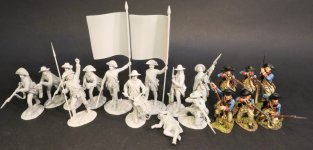
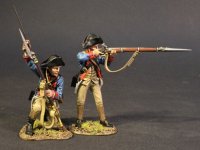
SNH-08
DRUMS ALONG THE MOHAWK,
THE BATTLE OF SARATOGA 1777,
CONTINENTAL ARMY,
THE 2nd NEW HAMPSHIRE REGIMENT,
2 LINE INFANTRY.
(2pcs)
Please note that the New Hampshire Regiment figures will be re-paints of the previous Continental Figures.
ANGLO-ALLIED ARMY

The 62nd Regiment of Foot was an infantry regiment of the British Army, which was raised in 1756 and saw service through the eighteenth and nineteenth centuries. Under the Childers Reforms it amalgamated with the 99th (Lanarkshire) Regiment of Foot to form the Wiltshire Regiment in 1881.
In October 1756 a second battalion to the 4th Regiment of Foot was formed as part of measures to strengthen the army at the start of the Seven Years' War with France.
In January 1758 four companies of the 2nd/4th Regiment embarked at Plymouth as Marines under Major T Hardy in five ships of Admiral Boscawen's fleet while Battalion Headquarters and the remaining companies stayed at Plymouth. The fleet sailed for Halifax, Nova Scotia, the base for a seaborne attack on French Canada. However, on 21 April while the fleet was part way across the Atlantic came news of a change of name following an official decree that the new second battalions throughout the Army would be numbered as separate regiments. Under this re-organisation the 2nd/4th Regiment became the 62nd Regiment of Foot.
Throughout the Canadian campaign the 62nd continued to serve as Marines, providing landing parties, manning ships' boats, putting artillery pieces ashore and providing local protection for them. During this time the Regiment won its first Battle Honour 'Louisburg' in 1758, but it was not awarded until 152 years later. The reason for this was that since they were employed on board ship the men were on the strength of the navy, not the army, so that at the time the War Office stated they had no record of the Regiment's participation!
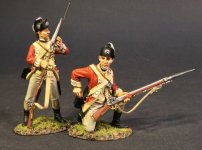
S62-08
DRUMS ALONG THE MOHAWK,
THE BATTLE OF SARATOGA 1777,
THE ANGLO ALLIED ARMY,
THE 62nd REGIMENT OF FOOT,
2 LINE INFANTRY.
(2pcs)
The Regiment was still in Ireland when fighting broke out near Boston between the Colonists and British troops and an American force set out to conquer Canada in 1775. The 62nd sailed for Quebec the following year. The Regiment acted as Light Infantry and were involved in the advance from Canada into the rebel New England colonies under General Burgoyne. They won great praise for their steadfastness and fortitude in a number of actions.
On 19th August 1777, Burgoyne began a movement to encircle the American fortifications on Bemis Heights. Burgoynes intention was to take possession of the high ground to the west of the American fortifications and use the advantage of greater elevation to bombard the Americans from their flank.
Brigadier Fraser, with the British Right Wing, pushed into the woods along the northern side of a deep ravine. Hamilton followed him with the British Centre, accompanied by Burgoyne. Riedesel and his German troops remained on the riverside with the boats and supplies. Once in a line the three contingents would advance on the Americans.
Gates had no aggressive plan with which to counter the British move. He planned to await attack in his fortified position on Bemis Heights. His subordinate, Arnold, had no such intention. He was determined to take the fight to the advancing British and use the advantage his men had in forest fighting.
Arnold pressed Gates to attack with the whole army. Gates refused, but finally agreed that Arnold could take his own division forward against the British line.
Morgans riflemen were the first American troops to attack, launching an buttault on a small force of Canadians and Indians of Frasers Right Wing. Morgans men were followed by Arnolds division of New Hampshire Continentals.
As the Canadians and Indians fell back, Morgans riflemen rushed on in pursuit and were dispersed by a British counterattack.
The New Hampshire Continentals were repelled by Frasers Grenadiers and Light Companies.
Burgoynes and Hamiltons Centre approached Freemans Farm, leaving a substantial gap between themselves and Frasers more distant force. Arnold rallied his men and resumed the attack into the gap between the British Centre and Right Wing.
More American regiments from Arnolds Division came up and joined the buttault. Burgoynes flank regiment, the 21st Foot, was forced to fall back to avoid being overwhelmed. This left the 62nd Regiment at the angle of the line and under heavy fire.
A desperate battle developed between the attacking Americans and the regiments of the British Centre. During this fighting, which was described by veteran British soldiers as very heavy, General Phillips led a bayonet charge of the 20th Regiment, to enable the 62nd to withdraw and re-organise.
Gates, still in the American position on Bemis Heights, refused to commit further formations of the American army to the battle. If he had done so, it is generally accepted that the British Centre would have been overwhelmed.
In contrast to Gates refusal of requests for buttistance from Arnold, Riedesel on the British Left responded with alacrity to the crisis. Leaving the British 47th to guard the baggage, Riedesel marched his regiments up the hill. He arrived to find the British Foot in great difficulty, and, without delay, launched a flank attack on the American troops. The fire of his artillery and foot was sufficient to relieve the pressure on the British regiments and force the Americans to withdraw. By this time night was falling.
The Americans fell back in some confusion to their fortified camp on Bemis Heights.
At the battle of Freeman's Farm in the Saratoga campaign of 1777 the losses were so heavy that at the end only five officers and 60 men of the 62nd were fit for duty. Lack of reinforcements and supplies eventually caused General Burgoyne to surrender and the remaining members of the 62nd were taken prisoner. By 1780 most of the officers had been exchanged and were back home but few of the men ever saw England again.
THE EIGHTEENTH CENTURY COLLECTION
DRUMS ALONG THE MOHAWK
THE BATTLE OF SARATOGA 1777,
THE FIRST BATTLE OF SARATOGA 1777
THE BATTLE OF FREEMANS FARM, SEPTEMBER 19th 1777
THE CONTINENTAL ARMY
The Continental Army was formed by the Second Continental Congress after the outbreak of the American Revolutionary War by the colonies that became the United States of America. Established by a resolution of the Congress on June 14, 1775, it was created to coordinate the military efforts of the Thirteen Colonies in their revolt against the rule of Great Britain. The Continental Army was supplemented by local militias and troops that remained under control of the individual states or were otherwise independent. General George Washington was the commander-in-chief of the army throughout the war.
The Continental Army consisted of soldiers from all 13 colonies and, after 1776, from all 13 states. When the American Revolutionary War began at the Battles of Lexington and Concord on April 19, 1775, the colonial revolutionaries did not have an army. Previously, each colony had relied upon the militia, made up of part-time citizen-soldiers, for local defense, or the raising of temporary "provincial regiments" during specific crises such as the French and Indian War of 175463. As tensions with Great Britain increased in the years leading to the war, colonists began to reform their militias in preparation for the perceived potential conflict. Training of militiamen increased after the passage of the Intolerable Acts in 1774. Colonists such as Richard Henry Lee proposed forming a national militia force, but the First Continental Congress rejected the idea.
The Continental Army of 177780 evolved out of several critical reforms and political decisions that came about when it became apparent that the British were sending massive forces to put an end to the American Revolution. The Continental Congress passed the "Eighty-eight Battalion Resolve", ordering each state to contribute one-battalion regiments in proportion to their population, and Washington subsequently received authority to raise an additional 16 battalions. Enlistment terms extended to three years or to "the length of the war" to avoid the year-end crises that depleted forces (including the notable near-collapse of the army at the end of 1776, which could have ended the war in a Continental, or American, loss by forfeit).
THE 2nd NEW HAMPSHIRE REGIMENT
The 2nd New Hampshire Regiment was formed in early May 1775, as the second of three Continental Army regiments raised by the state of New Hampshire during the American Revolutionary War. Its first commander was Colonel Enoch Poor, with Joseph Cilley as major. Many of the men who served in the unit hailed from southeastern New Hampshire and western Maine (then part of Massachusetts).
After Enoch Poor was promoted to Brigadier, Nathan Hale was commissioned colonel of the 2nd New Hampshire Regiment in April 1777.


SNH-08
DRUMS ALONG THE MOHAWK,
THE BATTLE OF SARATOGA 1777,
CONTINENTAL ARMY,
THE 2nd NEW HAMPSHIRE REGIMENT,
2 LINE INFANTRY.
(2pcs)
Please note that the New Hampshire Regiment figures will be re-paints of the previous Continental Figures.
ANGLO-ALLIED ARMY

The 62nd Regiment of Foot was an infantry regiment of the British Army, which was raised in 1756 and saw service through the eighteenth and nineteenth centuries. Under the Childers Reforms it amalgamated with the 99th (Lanarkshire) Regiment of Foot to form the Wiltshire Regiment in 1881.
In October 1756 a second battalion to the 4th Regiment of Foot was formed as part of measures to strengthen the army at the start of the Seven Years' War with France.
In January 1758 four companies of the 2nd/4th Regiment embarked at Plymouth as Marines under Major T Hardy in five ships of Admiral Boscawen's fleet while Battalion Headquarters and the remaining companies stayed at Plymouth. The fleet sailed for Halifax, Nova Scotia, the base for a seaborne attack on French Canada. However, on 21 April while the fleet was part way across the Atlantic came news of a change of name following an official decree that the new second battalions throughout the Army would be numbered as separate regiments. Under this re-organisation the 2nd/4th Regiment became the 62nd Regiment of Foot.
Throughout the Canadian campaign the 62nd continued to serve as Marines, providing landing parties, manning ships' boats, putting artillery pieces ashore and providing local protection for them. During this time the Regiment won its first Battle Honour 'Louisburg' in 1758, but it was not awarded until 152 years later. The reason for this was that since they were employed on board ship the men were on the strength of the navy, not the army, so that at the time the War Office stated they had no record of the Regiment's participation!

S62-08
DRUMS ALONG THE MOHAWK,
THE BATTLE OF SARATOGA 1777,
THE ANGLO ALLIED ARMY,
THE 62nd REGIMENT OF FOOT,
2 LINE INFANTRY.
(2pcs)
The Regiment was still in Ireland when fighting broke out near Boston between the Colonists and British troops and an American force set out to conquer Canada in 1775. The 62nd sailed for Quebec the following year. The Regiment acted as Light Infantry and were involved in the advance from Canada into the rebel New England colonies under General Burgoyne. They won great praise for their steadfastness and fortitude in a number of actions.
On 19th August 1777, Burgoyne began a movement to encircle the American fortifications on Bemis Heights. Burgoynes intention was to take possession of the high ground to the west of the American fortifications and use the advantage of greater elevation to bombard the Americans from their flank.
Brigadier Fraser, with the British Right Wing, pushed into the woods along the northern side of a deep ravine. Hamilton followed him with the British Centre, accompanied by Burgoyne. Riedesel and his German troops remained on the riverside with the boats and supplies. Once in a line the three contingents would advance on the Americans.
Gates had no aggressive plan with which to counter the British move. He planned to await attack in his fortified position on Bemis Heights. His subordinate, Arnold, had no such intention. He was determined to take the fight to the advancing British and use the advantage his men had in forest fighting.
Arnold pressed Gates to attack with the whole army. Gates refused, but finally agreed that Arnold could take his own division forward against the British line.
Morgans riflemen were the first American troops to attack, launching an buttault on a small force of Canadians and Indians of Frasers Right Wing. Morgans men were followed by Arnolds division of New Hampshire Continentals.
As the Canadians and Indians fell back, Morgans riflemen rushed on in pursuit and were dispersed by a British counterattack.
The New Hampshire Continentals were repelled by Frasers Grenadiers and Light Companies.
Burgoynes and Hamiltons Centre approached Freemans Farm, leaving a substantial gap between themselves and Frasers more distant force. Arnold rallied his men and resumed the attack into the gap between the British Centre and Right Wing.
More American regiments from Arnolds Division came up and joined the buttault. Burgoynes flank regiment, the 21st Foot, was forced to fall back to avoid being overwhelmed. This left the 62nd Regiment at the angle of the line and under heavy fire.
A desperate battle developed between the attacking Americans and the regiments of the British Centre. During this fighting, which was described by veteran British soldiers as very heavy, General Phillips led a bayonet charge of the 20th Regiment, to enable the 62nd to withdraw and re-organise.
Gates, still in the American position on Bemis Heights, refused to commit further formations of the American army to the battle. If he had done so, it is generally accepted that the British Centre would have been overwhelmed.
In contrast to Gates refusal of requests for buttistance from Arnold, Riedesel on the British Left responded with alacrity to the crisis. Leaving the British 47th to guard the baggage, Riedesel marched his regiments up the hill. He arrived to find the British Foot in great difficulty, and, without delay, launched a flank attack on the American troops. The fire of his artillery and foot was sufficient to relieve the pressure on the British regiments and force the Americans to withdraw. By this time night was falling.
The Americans fell back in some confusion to their fortified camp on Bemis Heights.
At the battle of Freeman's Farm in the Saratoga campaign of 1777 the losses were so heavy that at the end only five officers and 60 men of the 62nd were fit for duty. Lack of reinforcements and supplies eventually caused General Burgoyne to surrender and the remaining members of the 62nd were taken prisoner. By 1780 most of the officers had been exchanged and were back home but few of the men ever saw England again.


